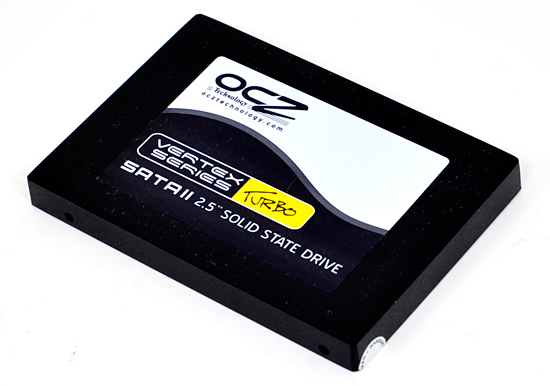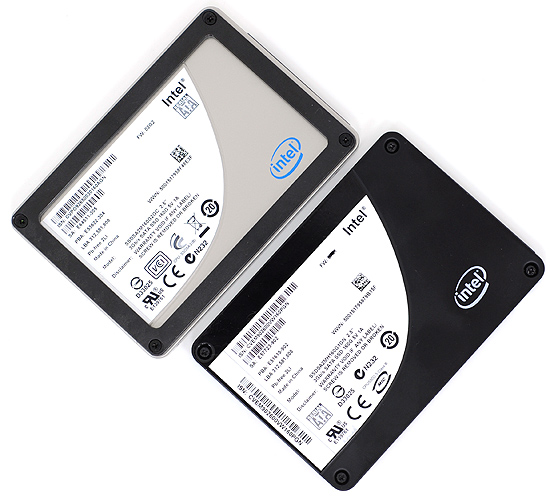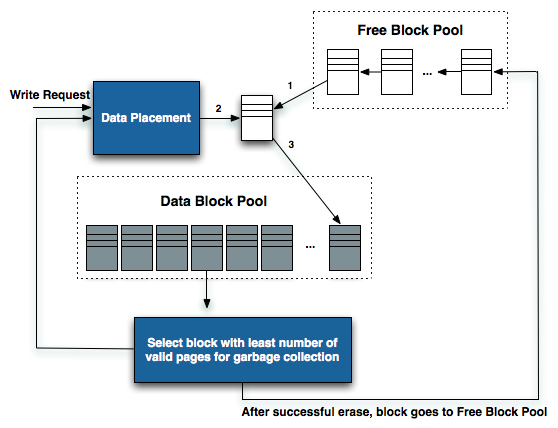The SSD Improv: Intel & Indilinx get TRIM, Kingston Brings Intel Down to $115
by Anand Lal Shimpi on November 17, 2009 7:00 PM EST- Posted in
- Storage
Update 2: Intel has given us an updated timeframe on a fixed version of its TRIM firmware. Intel will release the new firmware by the end of November 2009. More info here.
Update: Some users have had issues with Intel's TRIM firmware bricking their drives, Intel has since pulled the firmware while they figure out what's going on. If you've downloaded it but haven't updated, do so at your own risk. While we haven't had any issues on the three drives we've updated here others have had problems. We'll keep you posted. Intel's official statement is below:
“Yes, we have been contacted by users with issues with the firmware upgrade and are investigating. We take all sightings and issues seriously and are working toward resolution. We have temporarily taken down the firmware link while we investigate.”
Welcome to the anti-climax. After a year of talking about it, Windows 7 and TRIM are here. How does it feel to be a TRIMionaire?

Indilinx, as usual, was first. After a couple of false starts, the two tier 1 Indilinx partners (SuperTalent and OCZ) enabled TRIM on their Barefoot SSDs (OCZ Vertex, SuperTalent UltraDrive). OCZ calls its TRIM firmware 1.40 while SuperTalent calls it 1819. Update:As many of you have correctly pointed out, Crucial also has an 1819 update available for its SSDs. You can get the firmware for your drive from the links here:
| TRIM Firmware Download | |
| Crucial | M225 1819 |
| SuperTalent | UltraDrive GX 1819 |
| OCZ | Vertex /Agility 1.40 |
Intel held off to align with the release of Windows 7. Last week Windows 7 officially went on sale, and today Intel is delivering on its promise: this bootable iso will enable TRIM on X25-M G2 drives.

Only the X25-M G2 gets TRIM, the G1 (right) is left in the dust. The G1 is more resilient than the G2 when it comes to performance degradation over time since it doesn't have TRIM.
Alongside TRIM there’s one more surprise. If you own a 160GB X25-M G2, Intel boosted sequential write speeds from 80MB/s to 100MB/s:

The 80GB drives remain unchanged unfortunately. Intel still won’t tell us why write speeds are so low to begin with.
What TRIM Does
Before we get much further, and without diving into a complete rehash of how SSDs work (which I’ve done here, here and here again), I want to do a quick refresher on TRIM.
SSDs are made up of millions of NAND flash cells. They can be written to in groups called pages (generally 4KB in size) but can only be erased in larger groups called blocks (generally 128 pages or 512KB). These stipulations are partially the source of many SSD performance issues.
The whole ordeal gets more complicated when you realize that an SSD has no way of knowing when a file is deleted. Until an address gets used again, the SSD has to keep track of every last bit of data that’s written to it. The ATA-TRIM instruction tilts the balance in favor of the SSD.
In a supported OS (e.g. Windows 7), whenever you permanently delete a file or format your drive, the addresses that are erased are sent along with the TRIM command to the SSD’s controller. The TRIM instruction tells the SSD that those locations don’t contain valid data and that it no longer has to track them.

Simplified version of how a SSD controller works. TRIM helps the SSD clean blocks and add them to the free block pool
Again, I won’t go into great detail here but TRIM addresses a major part of the performance degradation over time issue that plague all SSDs. A TRIM enabled drive running an OS with TRIM support will stay closer to its peak performance over time.










162 Comments
View All Comments
mbreitba - Tuesday, October 27, 2009 - link
Looks like a lot of people are having problems with it, and Intel has pulled it :http://communities.intel.com/thread/7693?start=45&...">http://communities.intel.com/thread/7693?start=45&...
Griswold - Wednesday, October 28, 2009 - link
If you actually look at the number of people with the issue and filter out the chit-chat, its not "alot" actually. However, my flash went just fine.Thats the risk with flashing firmware regardless of what device it is. Theres always the chance to brick it. Thats also why I dont understand why some people flash every fucking piece of hardware whenever theres a new firmware available - ok, this is a different case, here it makes perfectly sense.
strikeback03 - Wednesday, October 28, 2009 - link
Has anyone had problems flashing a drive before they put any data on it? I have a new G2 still in the box that I just haven't yet had time to do anything with, was planning on flashing it then loading Win7 and Ubuntu 9.10 this weekend, have there been any reports of issues when loading an OS after flashing?UltraWide - Tuesday, October 27, 2009 - link
Great article, I like the definite conclusions and recommendations. Keep up the good work!nicolasv - Tuesday, October 27, 2009 - link
Hi AnandIn 'The SSD Relapse' you state that the G2 "doesn't drop in performance when used...at all." Yet in 'The SSD Improv' the 80GB G2 with TRIM firmware drops more than 60% in the 4KB random write test.
Granted, the charts and figures used in 'Relapse' to back its claim are for the 160GB G2 and these results are for the 80GB G2. What do you attribute this difference in performance to, the new TRIM firmware?
As a Mac OS X user, at this point, I feel like I can only really consider drives that perform well without TRIM, especially in the <= 80GB range, so would appreciate your feedback.
Cheers
Nicolas
7Enigma - Tuesday, October 27, 2009 - link
I believe it is because in that particular test he is writing to the ENTIRE 80gig drive, so it's not that TRIM isn't working per se, rather that there is no free space to allow TRIM to do anything at all.7Enigma - Tuesday, October 27, 2009 - link
As an addendum to my previous post, you can see that after file deletion the performance goes back to virtually new. So in a sense the performance of the drive never goes down, UNLESS you simply delete a partition rather than erasing the data on that partition FIRST and then deleting it.I think that's probably something that needs to be implemented with an updated driver, or at least a warning box that comes up saying "deleting this partition without formatting will hinder performance".
GullLars - Tuesday, October 27, 2009 - link
I don't know if you have done extensive benchmarking with SSDs, but using IO QD = 3 for 4KB random in IOmeter don't yield representative results for intels SSDs. I have been benchmarking SSDs with some other guys for over a year now, and we have found that while Samsung and Indilinx scale from QD 1-4 and then flat out, Intels x25-M scales well all the way to around QD 10-16, and actually is capable of over 140 MB/s at 4KB random read at QD=64 in fresh state, and still over double your messured 60-64 MB/s in used state.In our benchmark thread, the records with x25-M from ICH10R before TRIM firmware are:
IOmeter
4KB random read QD=64: 40913 IOPS = 163,5 MB/s
4KB random write QD=64: 19360 IOPS = 77 MB/s
PCmark vantage HDD score: 43107.
The same guy that got the random read and PCmark scores above also got PCmark vantage HDD score 120374 with 3 x25-M gen1 from ICH10R.
In other words, the results posted for x25-M in this review are either in "used state" or below par.
Voo - Tuesday, October 27, 2009 - link
You know Anand trys to simulate REAL situations and a QD of 10-16 is absolutly unrealistic for a home user - don't even talk about a QD of 64. Maybe the Intel SSDs shine there, but it's just of no interest.GullLars - Tuesday, October 27, 2009 - link
In his traced "light" benchmark with mostly single-tasking the average queue depth is 6.09. If you take into account that most of the sequential read and write operations (although they are under 30%) don't generate a queue, and that 4-16KB IOs often come in bursts with more queue depth, you can easily get a QD of more than 10 with relatively mild multitasking if it involves disk access. A harddisk's cache is regulary used as a buffer for the write portion of these, but if the cache is full your system almost freezes because of the harddisks low IOPS. An example would be if you try installing windows updates or a program while running a virus scan and listening to music or extracting a compressed archive, you will quickly notice if you try this on a harddisk.